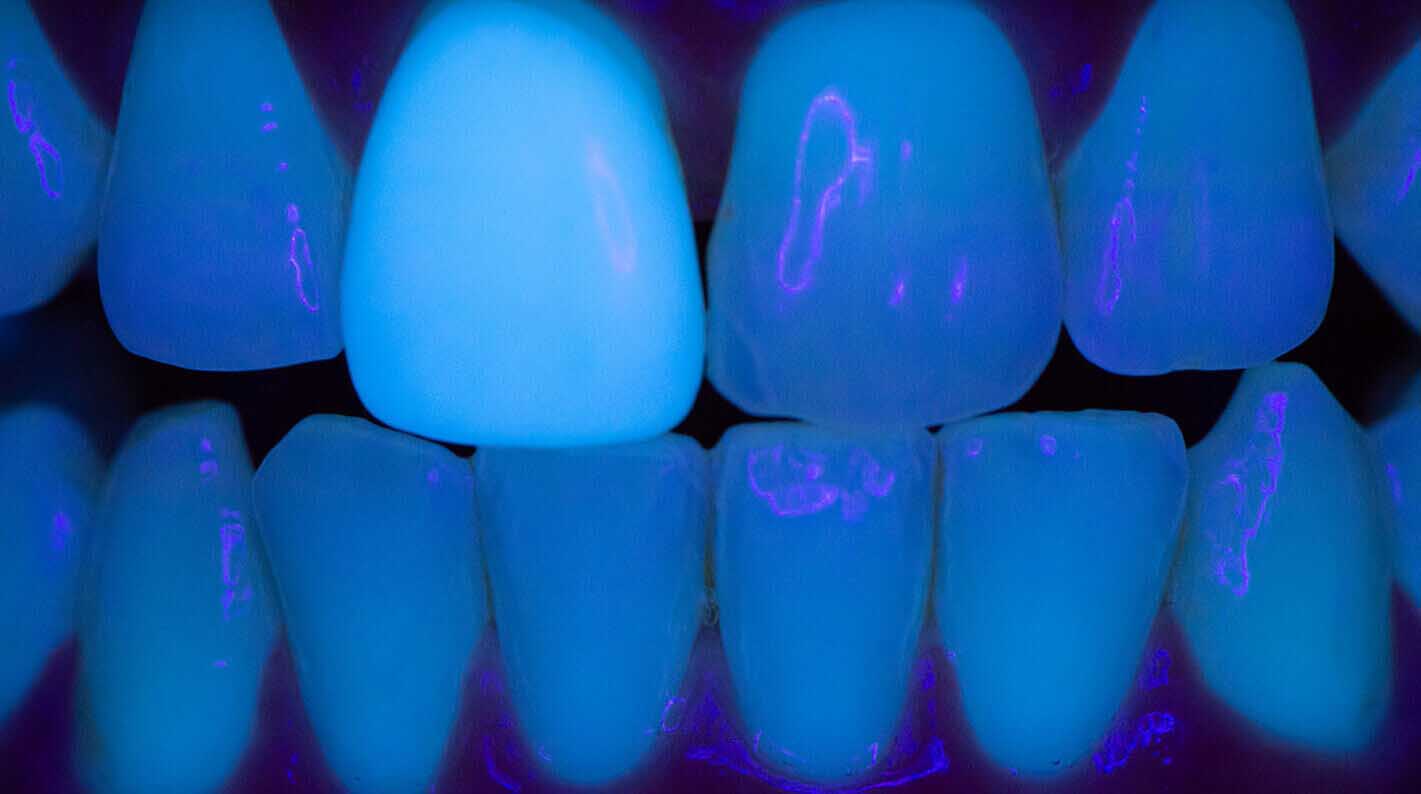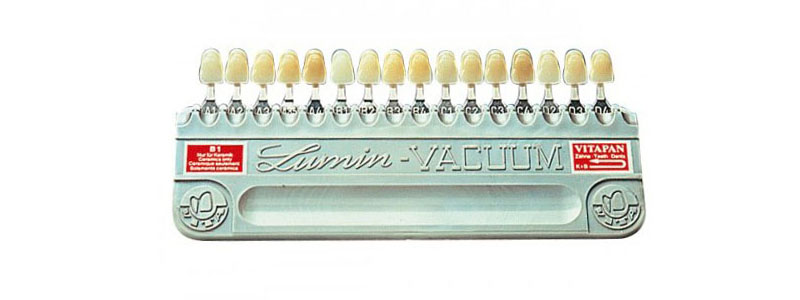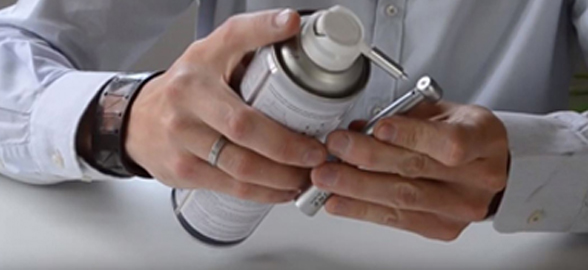The dental composite is one of the most widely used materials today in dental clinics. It is mainly used both for anterior aesthetic reconstructions, as well as for fillings or fillings of posterior teeth. To adapt to the particular needs of each patient, numerous types of composites with different characteristics have appeared on the market. and instructions for use.
Today we want to help you make the choice of composite the best possible for any of your clinical cases. For this reason, we bring you this article where we tell you everything you need to know about this product. You can't miss it!

Types of dental composites and their main applications in dentistry:
Anterior Composites
The anterior composites, also called aesthetic composites, are used for dental restorations in which an aesthetic result with a very natural finish is important. The main advantage of aesthetic composites is that they can be polished to a long-lasting high gloss. Therefore, they are the most intended in Dentistry for anterior aesthetic restorations. These composites allow the color, shape, and size of the dental piece to be modified without the need for carving. You can see at this link the full range of anterior composites that we offer at Dentaltix, available at syringe and capsule, and you can choose the tone and opacity that best suits your needs: A1, A2, A3, A3.5, A4, B1, B2, B3, C2 , C3, C4, D3, IB1, OA2, OA3.5....You can click here to see our "Top 10 Aesthetic Composites" list.
Posterior Composites
The posterior composite, as its name suggests, is especially indicated for the restoration of teeth in the posterior area. These composites are designed taking into account the greater masticatory pressure to which posterior restorations are subjected and the result of their application is a very reliable and long-lasting dental restoration. In this link you can consult the full range of posterior composites available on our website. You will be able to find Composite Kits that include syringes in an assortment of different shades and the necessary accessories (adhesive, etchant, color guide, tips). Or you can also purchase composite refills directly in syringe or capsule.
Flowable Composites
The flowable or flow composite is essentially characterized by its excellent adaptability and fluidity. This provides the dentist with great ease in handling the composite. Flowable composites are used to fill small cavities in teeth, such as fissures, pores or tiny stump cavities. At Dentaltix, you can find a wide range of flowable composites.
Universal Composites
Universal composites are designed to be used in aesthetic restorations of teeth in both the anterior and posterior areas. To match the shade of tooth enamel, these composites are available in a wide range of shades. The universal composite can be found in different formats, in a syringe, in a capsule or fluid. Among the universal composites that we offer at Dentaltix, the following stand out:
- Composite Tetric Evoceram by Ivoclar: in Kit, in syringes, or in capsules.
- Composite 3M Filtek Suprem XTE
: available in Syringe Kit + accessories, Capsule Kit + accessories. or replacements.
- For its quality/price ratio: Micro-hybrid composite of Medicaline in a 4.5gr syringe, or in a kit of syringes + accessories (adhesive, tips, brushes).
Self-curing Composites
In dual-curing or self-curing composites it is not necessary to carry out the light-curing process. For this reason, these composites are used for core reconstruction, (because it is very useful if the core has deteriorated but the bridge is in good condition. In these cases it is used inside the bridge as a mold for the false stump). The use of the self-curing composite is also indicated for filling cavities in posterior teeth where greater mechanical qualities are preferred, or if the cavity is very large and the layering of a light-curing composite is very slow. Among the self-curing composites available at Dentaltix, the Self-curing composite stands out Dental Flux.
Bulk Fill Composites
Traditional composites should be placed gradually to allow full curing of the layers and reduce shrinkage. However, Bulk Fill composites are specially designed to avoid placing multiple layers or performing the entire restoration in one go. Its various materials are concerned with the depth of healing, its marginal integrity and its adaptation through special additives for good clinical performance, even in the application of large volumes of composite. Bulk Fill is prepared to simplify its placement as well as to provide its full potential and save time in operations. In Dentaltix you can find Bulk Fill Composites, the most popular are Tetric Evoceram Bulk Fill by Ivoclar and the 3M Filtek Bulk Fill.
Orthodontic Composites
Orthodontic composites are resins intended for orthodontic dental treatments, for example, they are used for the cementation of brackets, the orthodontic union of bands etc Orthodontic composites are generally light-curing and release fluoride. They are delivered in syringes or as a paste in a cartridge. Among all the orthodontic composites available in our online store, the Medicaline Orthocement stands out
Why does the size of the composite filler particles matter?
In the world of composites, particle size matters a lot. Depending on the filler particle size, we find the following types of dental composite:
Macrofill composites
The first dental composites that were used in dentistry were determined by their macro filling. They are so called because their size was 15 to 100 micrometers. On the other hand, nowadays, simple particles of 2 micrometers are considered macroparticles. These composites were very resistant, but their surface roughness, difficult polishing and poor clinical performance limited their use until they became obsolete. Fortunately, to deal with this aesthetic issue, microfiller composites soon emerged.
Microrefill composites
These composites have a more appropriate particle size: 0.4 micrometers. Their reduction, together with their natural translucency and high degree of polish, make for exceptional aesthetics. However, they are limited to the anterior sector, where the masticatory stresses are lower than those of the posterior sector. A good example of microrfilled composite is Heliomolar from Ivoclar Vivadent, available in syringe , capsules or in fluid composite
Microhybrid composites
Another type of dental composite is the hybrid, characterized by mixing different sizes in its composition, this offers the best of both in dental resins. Hybrid composites can be described as small particle macro-fill composites (0.6 - 5 micrometers), with a microfiller of 0.04 micrometers incorporated into the resin matrix. This combination of particles improves the transfer of tension between particles, conferring unique and superior properties. These microhybrids are universal composites, and can be used in both anterior and posterior restorations, thanks to their impressive combination of strength and polishability, wear and fracture resistance, and versatile clinical handling. An example of a microhybrid composite with a very high degree of polish and strength is Ultradent's Amelogen Plus., available in a 2.5 gram.
syringe.
Nanorellene composites
The nanorelleno is one of the most advanced choices in the field of dentistry. Nanotechnology has made it even more possible to reduce filler particles to nanometric dimensions. Composites formed by nanoparticles have exponentially improved their mechanical and aesthetic properties, such as abrasion resistance, surface smoothness, and the final finish result. An example of this composite is Voco's Grandio. This composite, available in a syringe, consists of nanoparticles between 25 and 60 nm and particles with an average size of 0.7 microns.
What tone range is available?
The composite is a synthetic material that adheres to the tooth surface for a perfect filling of the tooth. However, emulating the natural dentition to achieve an imperceptible restoration and great aesthetics, and adapt the colour through three aspects: tone , saturation and value, are other main objectives. Tonality or hue is the name of the colour, i.e. the specific type of wavelength. Today, most resinous systems use the classification Vita to identify shades. In it we can find four classical shades:
- A. Brown - Reddish. 80% of patients
- B. Orange - Yellow
- C. Grey - greenish
- D. Grey - Pink. Corresponding to 5% of people, and used more specifically for characterizations.
The tone of the dentine which is to be considered basic among the dentin elements, is recorded at the level of the central part of the vestibular cervical third. This is where the least amount of enamel can be found, but a large volume of dentine can be found. On the other hand, the shade of the enamel should be recognized at the level of the middle third of the teeth, where it is generally two or three shades lighter than the one chosen for the dentine.
What to take into account in composite polymerization?
There are a lot of factors that can alter a good polymerization , and therefore, the final result of dental restorations. One of them is the time we dedicate to it, this varies according to the colour of the composite, the power of the lamp, the depth of the cavity, the thickness of the layer, the interposed dental structures or the quantity of the filling material itself.
- The colour of the composite. Darker shades require longer polymerization time, about 60 seconds at maximum depth of 0.5 mm.
- A composite at room temperature polymerizes in less time
- The layer thickness of the resins is very important. It is recommended not to polymerize layers with a thickness greater than 2 mm.
- The type of fill, for example, microfines polymerize worse than those with higher loads.
- The distance between the light bulb and the composite . The most optimal distance is greater than 1 mm with the light perpendicular to the material.
The contraction of the composite in the polymerization process
In treatment of dental composites it is very important to take into account certain situations that can be the cause of many of the problems when polymerizing. The hardening process of a polymer always occurs by the bonding of molecules that will bind and then occupy a smaller volume than the initial one. Dental resins need to be polymerized to obtain their properties. The more the composite material is polymerized, the better properties it achieves, but at the same time and to the detriment of the above, the more it undergoes this process, the more it will contract. The more it contracts, the greater the tension the adhered surfaces will be subjected to. Shrinkage cannot be totally avoided in the polymerization process of dental composites, but if we have these clear tips, we will get reduce it .
- Use dental composites with a restorvie system based on silorane. The silorane is an experimental hydrophobic resin of 3M ESPE, which rises from the combination of two basic chemical compoents, siloxanes and oxiranes. Its application will cause a significantly lower volumetric shrinkage.
- Nanotechnology. Nanofillers incorporate ceramics. The application of ceramics in the filling composition of dental composites reduces shrinkage considerably without losing the handling characteristics of the material. An example is the nanocomposite Filtek Supreme XTE from 3M ESPE
- Using dental resins composed of Ormocer is another advantage to decrease contraction. Ormocer is a much larger molecule than the conventional bis - GMA, the main component of most existing composites. However, the introduction of ormocer in the DNA of the dental composite has meant that its application has achieved an exponential improvement in the final result, since the percentage of contraction is significantly low. The set of Admira Fusion of the Voco brand is mainly composed of Ormocer and presents incredible results.
Like fish in the sea, there is one composite for each type of treatment. To find out which one is right for you, you just have to be up to date with all the important features and factors in its application. We hope that, from Dentaltix, we have helped you to resolve the most frequent doubts and you have acquired a better vision of the composite. If you still don't have it completely clear, you can consult in our blog article the dental composites guide: Main types and applications.







